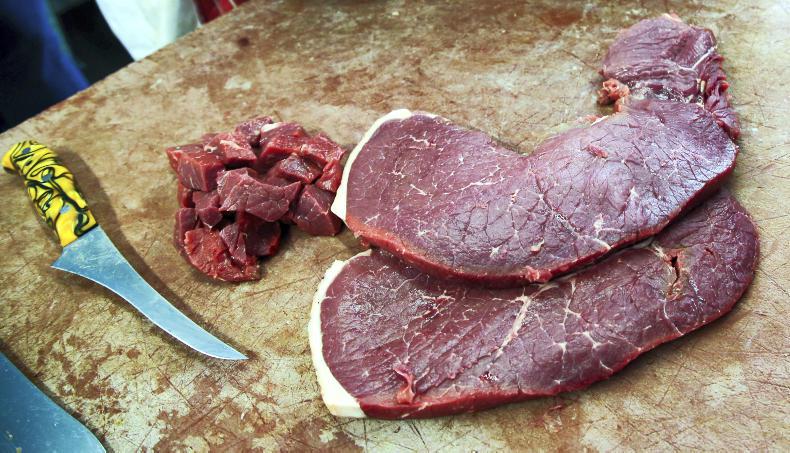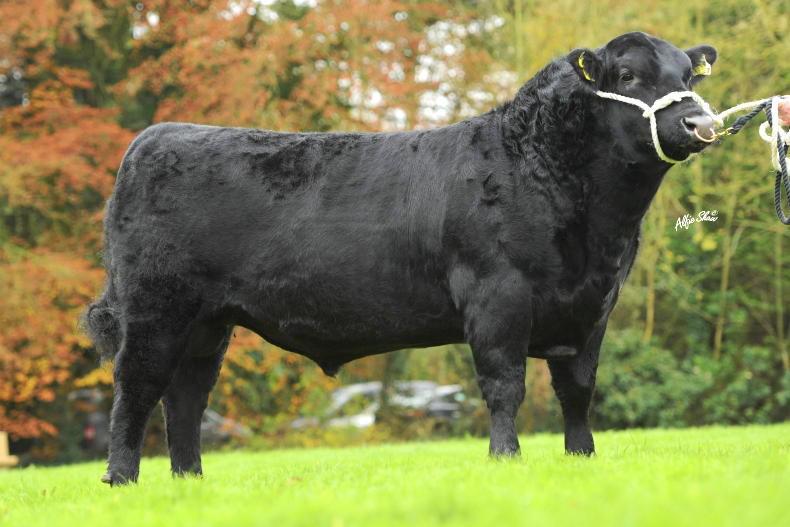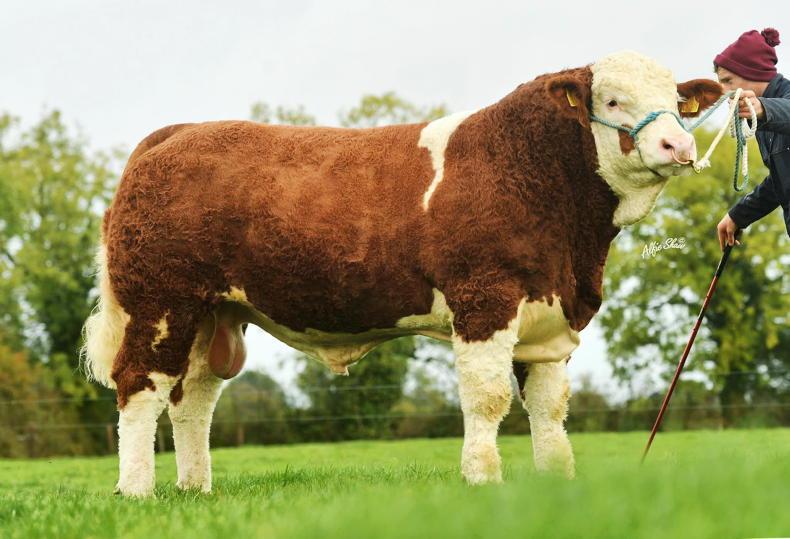A new meat eating quality (MEQ) index has been launched this week by the ICBF.
The MEQ index will rank bulls on meat quality under three headings - tenderness, flavour and juiciness.
The new proofs are a “world first” in terms of multi-breed genomic evaluations for meat eating quality traits, based on trained sensory panels.
The dataset behind the new evaluations is the largest single database of its kind in the world, with over 5,000 animals with meat eating quality data and some 2.5m animals in the entire dataset, 1.2m of which have genotypes.
Dr Andrew Cromie of the ICBF said: “The new proofs are a culmination of three years of work by the partners involved in Meat Technology Ireland, namely Teagasc, the ICBF, the meat processing industry and Enterprise Ireland.”

The Dovea Genetics Hereford bull GGM takes the top spot for juiciness, number two spot for flavour and fourth place for tenderness out of a list of 436 AI sires.
This is the first stage in the official publication of these proofs, with 436 AI sires receiving their first evaluation. Stock bulls and other cattle will be published in due course
Each sire is assessed on the three traits on the basis of the expected satisfaction rating from having a steak off a progeny from that sire.
The expected rating for each trait is 80%, with sires higher than this expected to produce progeny with improved meat eating quality for the relevant trait and animals below this expected to produce progeny with poorer meat eating quality for the relevant trait.
The range in average satisfaction values across a group of AI sires with published evaluations is 70% to 90%, with an average of 80%.
It’s no surprise that Aberdeen Angus and Hereford occupy most of the top spots across the three categories, with Aberdeen Angus coming out on top.
At the other end of the scale, Simmental occupy three out of the bottom five spots on tenderness, four out of five of the bottom spots on flavour and two of the five bottom spots on juiciness. The rest of the bottom spots are occupied by Charolais and Limousin sires.
Similar to the current €uro-Star evaluations, proofs for each animal are expressed both on a within- and across-breed evaluation, together with a reliability rating.
At this stage, the ICBF is only publishing proofs for beef AI sires that meet the following criterion:
They must have at least one progeny in the evaluation.<\bu> They must have a minimum reliability of 10%. <\bu>They must be born after 1990.<\bu>Further work is now under way including:
The inclusion of MEQ proofs on all animals in the dataset, including critically young pedigree males for the breeding programme.The calculation of economic values for these new traits, including the potential to include the traits directly into the €uro-Star replacement, terminal and dairy beef indices in the future.The biggest challenge will be how the economic values for these traits will be calculated. Currently, the industry doesn’t reward farmers for meat eating quality, so it will be interesting to see how Teagasc and the ICBF monetise the traits.
There is also an issue around the relationship between the terminal index and meat eating quality.
By selecting the current terminal index, tenderness of the meat will increase by 0.07 units, juiciness will remain constant and flavour will decrease by 0.03 units.
That poses the question - does our grading system need to change to reflect the new data and is there a willingness among processors to pay more for progeny sired by high Meat Eating Quality bulls?
For more details on the meat eating quality index see next week’s Irish Farmers Journal.
A new meat eating quality (MEQ) index has been launched this week by the ICBF.
The MEQ index will rank bulls on meat quality under three headings - tenderness, flavour and juiciness.
The new proofs are a “world first” in terms of multi-breed genomic evaluations for meat eating quality traits, based on trained sensory panels.
The dataset behind the new evaluations is the largest single database of its kind in the world, with over 5,000 animals with meat eating quality data and some 2.5m animals in the entire dataset, 1.2m of which have genotypes.
Dr Andrew Cromie of the ICBF said: “The new proofs are a culmination of three years of work by the partners involved in Meat Technology Ireland, namely Teagasc, the ICBF, the meat processing industry and Enterprise Ireland.”

The Dovea Genetics Hereford bull GGM takes the top spot for juiciness, number two spot for flavour and fourth place for tenderness out of a list of 436 AI sires.
This is the first stage in the official publication of these proofs, with 436 AI sires receiving their first evaluation. Stock bulls and other cattle will be published in due course
Each sire is assessed on the three traits on the basis of the expected satisfaction rating from having a steak off a progeny from that sire.
The expected rating for each trait is 80%, with sires higher than this expected to produce progeny with improved meat eating quality for the relevant trait and animals below this expected to produce progeny with poorer meat eating quality for the relevant trait.
The range in average satisfaction values across a group of AI sires with published evaluations is 70% to 90%, with an average of 80%.
It’s no surprise that Aberdeen Angus and Hereford occupy most of the top spots across the three categories, with Aberdeen Angus coming out on top.
At the other end of the scale, Simmental occupy three out of the bottom five spots on tenderness, four out of five of the bottom spots on flavour and two of the five bottom spots on juiciness. The rest of the bottom spots are occupied by Charolais and Limousin sires.
Similar to the current €uro-Star evaluations, proofs for each animal are expressed both on a within- and across-breed evaluation, together with a reliability rating.
At this stage, the ICBF is only publishing proofs for beef AI sires that meet the following criterion:
They must have at least one progeny in the evaluation.<\bu> They must have a minimum reliability of 10%. <\bu>They must be born after 1990.<\bu>Further work is now under way including:
The inclusion of MEQ proofs on all animals in the dataset, including critically young pedigree males for the breeding programme.The calculation of economic values for these new traits, including the potential to include the traits directly into the €uro-Star replacement, terminal and dairy beef indices in the future.The biggest challenge will be how the economic values for these traits will be calculated. Currently, the industry doesn’t reward farmers for meat eating quality, so it will be interesting to see how Teagasc and the ICBF monetise the traits.
There is also an issue around the relationship between the terminal index and meat eating quality.
By selecting the current terminal index, tenderness of the meat will increase by 0.07 units, juiciness will remain constant and flavour will decrease by 0.03 units.
That poses the question - does our grading system need to change to reflect the new data and is there a willingness among processors to pay more for progeny sired by high Meat Eating Quality bulls?
For more details on the meat eating quality index see next week’s Irish Farmers Journal.











SHARING OPTIONS